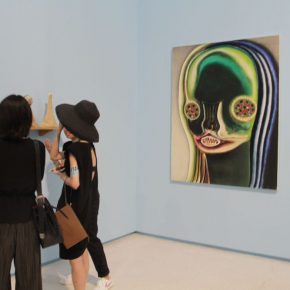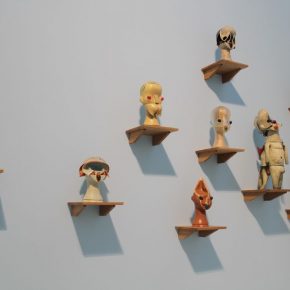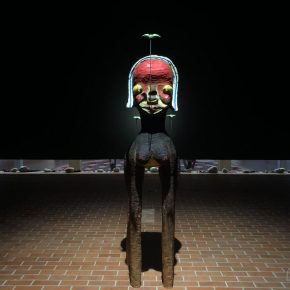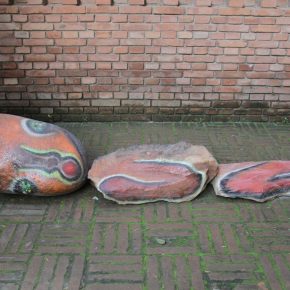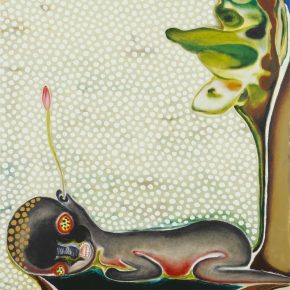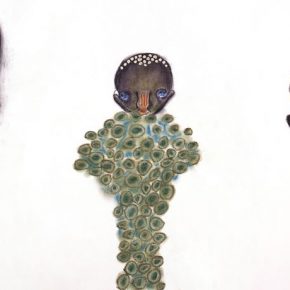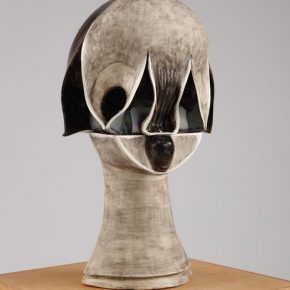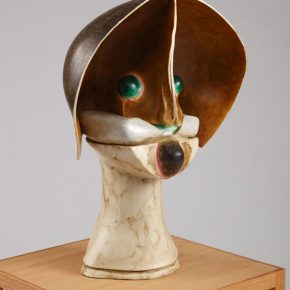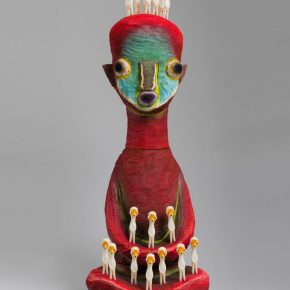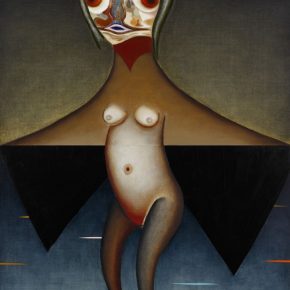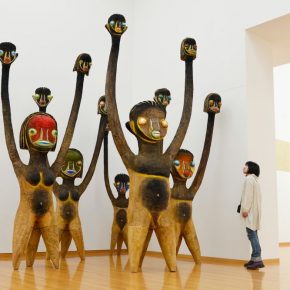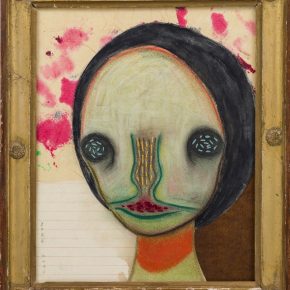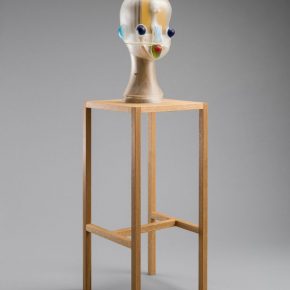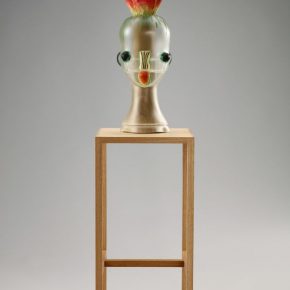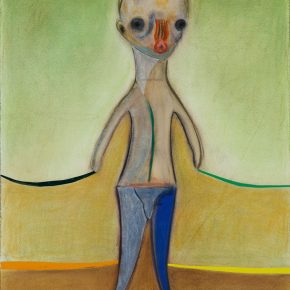
After Olafur Eliasson’s “The unspeakable openness of things” evoked the visiting boom among the art circle, “Izumi Kato”, the first large-scale solo exhibition in China of Japanese artist Izumi Kato at the Red Brick Art Museum attracted quite a few visitors. With this exhibition, the artist presents more than 50 works over the last decade that include Untitled (2018), a brand new fabric series specially tailored for the exhibition and an on-site creation in the garden of the Red Brick Art Museum.
The parallel Archival Exhibition invites viewers to get an in-depth understanding of the artist’s status during creation and major nodal points used during his engagement with art after relishing in the rich experience of art. The exhibition is curated by Yan Shijie, as the first periodic retrospection of the artist’s career, which also embodies a brand new starting point for the artist’s creation.
Stepping into the museum, the initial view is a set of woodcarving portraits that are placed in the iconic circular atrium of the Red Brick Art Museum. The eyes of these statues stand out, and the upper body is nearly black and the lower body retains the original color of the wood. The five statues in the group raise their arms straight up and the arms extend out to constitute an image of the head of the two statues. Confronted with this group of statutes, various people have different interpretations, but they are usually shocked by the intangible ritual sense created by this group of statues. This is the general feeling that Izumi Kato’s exhibits have brought to us, thus it is not necessary to have a divisional line to remind visitors to keep a certain distance from the exhibits. Moreover, when we come close and try to read the information or ask the artist to interpret his creation, we will return without accomplishing anything.
People are used to asking questions. For some reason, how to interpret these works by Izumi Kato has aroused great interest from the viewers including the author. Since Izumi Kato did not have direct painting experience during his growth period, these explanations often concentrate on his influence from the tradition of worshiping elves of the Pan-Essence and Multi-God Faith in the Shimane Prefecture. This is also the only powerful explanation that Izumi Kato can provide for his work when he was confronted by journalists. In an interview with the media, he stated frankly: "Although I don't know much about the whole culture of Shimane, I grew up with lots of monsters, gods and other legends. I believe in them very deeply. For example, there are gods and thoughts in water and woods. For example, there were children that drowned in the sea, and so the family scares the children into not playing in the sea. At night, there will be monsters emerging from the sea. I have been influenced by such education since I was a child. This still influences me." In addition, Izumi Kato does not have much to say about his artistic experience, and he cannot give any interpretation for specific works. He believes that, "My paintings are good or not and what is drawn depends both on what people think about it and how they think." Therefore he seems not to care about any interpretation.
As for the choice of materials for his work, Izumi Kato said that he relied mainly on intuition. He likes to try things that he feels, even though he doesn't understand the materials when he works, and he cannot guarantee the success of using new materials. Because he likes to try, Izumi Kato uses various materials as many as possible. Stone, cloth, soft plastic, etc. are all materials that he uses. He even paints directly with rubber gloves and his hands. He thinks that fingers act directly on the screen and can follow his "hopes of what I want to present, I can leave the best impression on the canvas."
The exhibition features his graphic paintings and three-dimensional sculptures, but we noticed that he demonstrates its iconic original "human" image no matter what form of expression there is. The "human" form he created has a human face, with ears, eyes, mouth and nose, which are similar to the forming fetus in the mother. To be precise, wide-pitched eyes, straight-filled noses, or round or flat solid-colored mouths, as well as the form-bearing ears, are more like portraits from different worlds that we can only imagine. For his choice of human form, Kato explained: "Assuming this is a cat's image, people will become gentle when watching cats, and in the image of people, when the audience is watching other ‘people’, they usually watch with a stricter eye. I think the reviews from people are very interesting."
The author believes that, as the curator Yan Shijie said at the opening ceremony of the exhibition: "The feeling of his work has been separated from us by time and space which is multidimensional. What we see is not a person we understand, but also a person with us, the feeling of an elf in a multidimensional space, or the feeling of an alien, has a 'multiple feeling', and this 'distance' may have generated our expectation and the desire to talk to it." When an artist entitled his work as "untitled", the author believes that serious observation and dialogue with the work is the correct way to view Kato's solo exhibition.
Text and photo by Yang Zhonghui and Red Brick Art Museum, translated and edited by Sue/CAFA ART INFO


